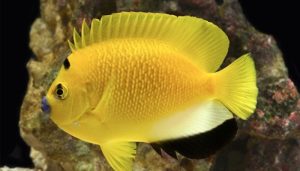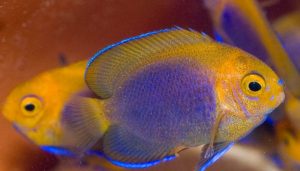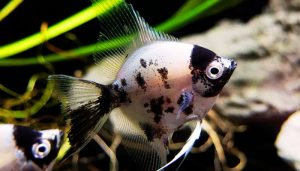Can goldfish and shubunkins breed? If you’ve ever wondered whether these two popular pond fish can interbreed, you’re not alone. Are hybrid offspring possible, and if so, what do they look like? Let’s dive into the fascinating world of goldfish and shubunkin breeding.
Goldfish and shubunkins can breed because they belong to the same species, Carassius auratus. Their hybrid offspring often display unique colors and patterns, blending the traits of both parents.
However, breeding them requires proper conditions and care to ensure healthy fry. But breeding isn’t just about mixing colors—it involves understanding genetics, tank conditions, and potential challenges.
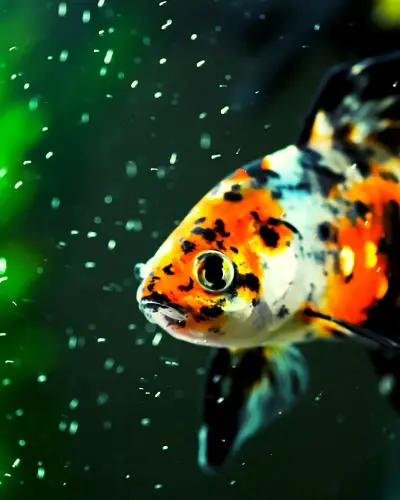
So, if you’re curious about how to breed them successfully or what to expect from hybrid fish, keep reading to uncover expert insights and essential tips!
Table of Contents
ToggleCan Goldfish and Shubunkins Live Together?
Goldfish and Shubunkins can live together harmoniously in a suitably sized aquarium or pond. Both species are coldwater fish and can tolerate similar temperature ranges, making them compatible tank mates.
However, it’s essential to consider the tank size, as goldfish produce a lot of waste and require ample space to thrive. A 20-gallon tank is recommended for keeping these fish together, allowing them to swim freely and reduce stress levels.
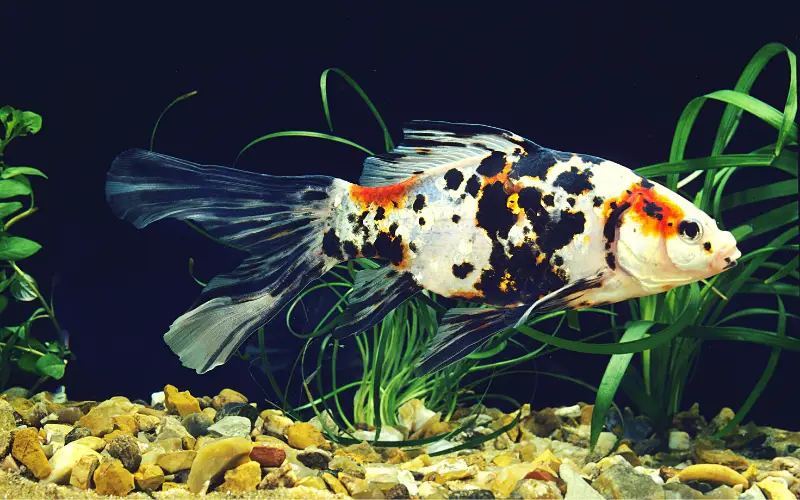
Care should also be taken to ensure that the tank is well filtered to manage the nitrate levels, as both varieties are social fish that thrive in a clean environment.
When housing Shubunkins and goldfish together, it’s important to monitor their behavior closely. While goldfish are generally peaceful, some individuals may exhibit more aggressive tendencies. Shubunkins, with their iridescent calico coloration, may attract unwanted attention from certain goldfish, especially during feeding times.
Ensuring that you feed your goldfish adequately can help reduce any aggressive behavior stemming from competition for food. Overall, with proper care and attention, goldfish and Shubunkins can live together in a vibrant aquatic community.
Can Goldfish and Shubunkins Breed?
Goldfish and Shubunkins can breed because they belong to the same family of fish, but hybridization is not guaranteed. When a male goldfish mates with a female Shubunkin, the offspring may exhibit characteristics from both parents.
The resulting fry, or baby fish, can vary in appearance, displaying traits ranging from the iridescent calico colorations of Shubunkins to the more common goldfish hues. However, breeding may require specific conditions such as the right water temperature and a suitable spawning environment.
To encourage breeding, it is crucial to replicate a natural environment in your aquarium. The breeding process often involves providing ample vegetation for the female to lay eggs and ensuring that the tank is well-maintained.
A well-maintained tank with a proper filtration system can help keep the water quality high, promoting healthy conditions for breeding. After spawning, the fry will need to be separated from the adults as goldfish can consume their offspring. With careful monitoring, you can successfully breed and raise hybrid goldfish and Shubunkins.
Shubunkin Habitat and Care
Creating a suitable habitat for Shubunkins is vital for their health and longevity. These fish thrive in environments that mimic their natural habitat, which includes a well-oxygenated water body with plenty of swimming space.
A tank should have a filtration system to manage waste, as Shubunkins produce a significant amount of waste, similar to goldfish. The water temperature should ideally be kept cooler, around 65-75°F, as Shubunkins are coldwater species that do not tolerate warmer tropical conditions well.
In addition to proper water conditions, Shubunkins require a varied diet to grow and maintain their health. Feeding them a mix of high-quality pellets and fresh vegetables will ensure they receive the necessary nutrients.
It’s also crucial to provide hiding spots within the tank using plants or decorations to reduce stress and allow them to feel secure. Overall, providing the right habitat and care for Shubunkins will not only enhance their coloration but also promote their overall well-being.
Commonly Asked Questions about Keeping Shubunkin Goldfish Together (FAQs)
Can shubunkin goldfish and fancy goldfish breed?
Yes, shubunkin goldfish and fancy goldfish can breed, as they belong to the same species of carp. However, the offspring may vary in appearance and characteristics.
What should I feed my shubunkin goldfish for optimal health?
Shubunkin goldfish require a well-balanced diet that includes high-quality fish pellets, vegetables like peas, and occasional treats. It’s important to provide food that suits their digestive needs.
Are calico goldfish and shubunkin goldfish the same species?
While both are varieties of goldfish, calico goldfish refer to the coloration pattern, whereas shubunkins are a specific type known for their unique color and pattern variations.
How can I create a healthy environment for my goldfish?
To keep goldfish healthy, ensure their fish tank is large enough (at least 20 gallons), maintain good water quality, and include external filters. Regular water changes and monitoring temperature are also essential.
Can I keep a shubunkin goldfish in a bowl?
It’s not advisable to keep shubunkin goldfish in a bowl as they require a larger space to thrive. A bowl does not provide adequate room for swimming or filtration, which can lead to health issues.
What are the signs of a healthy goldfish?
Healthy goldfish will have bright scales, active swimming behavior, and clear fins without any patches or lesions. They should also display normal feeding behavior and not show signs of distress.
How do I distinguish between a comet goldfish and a shubunkin goldfish?
Comet goldfish have long, flowing tails and are usually a solid orange color, while shubunkin goldfish have a calico coloration with patches of grey and black, along with more robust bodies.
Do goldfish require a heater in their tank?
Goldfish are temperate fish and generally do not require a heater if kept in room temperature conditions. However, in cooler climates, it’s important to ensure the water temperature remains stable.
How often should I treat my goldfish tank with medications?
Medications should only be used when necessary, such as when signs of illness are present. Regular health checks and maintaining a clean environment often reduce the need for treatments.
What types of plants are beneficial for a goldfish tank?
Live plants such as java fern and Anubias can be beneficial in a goldfish tank. They provide hiding spots, help oxygenate the water, and can improve the overall environment for the fish.
Can I keep Shubunkin Goldfish with Koi?
Yes, Goldfish comets and shubunkins can be kept with Koi as they have similar water requirements, but ensure the Koi are not too large to avoid competition or stress.
Can comet and shubunkin goldfish live together?
Yes, Shubunkin and comet goldfish can live together as they have similar care requirements, thrive in the same water conditions, and are compatible tank mates.
How big do shubunkin goldfish get?
Shubunkin Goldfish typically grow 12-18 inches long, depending on tank size, diet, and care. They thrive in ponds or large aquariums with proper space.
Conclusion
In conclusion, goldfish and Shubunkins can coexist in the same aquarium or pond, provided that the environment is suitable and well-maintained. While they can breed, successful hybridization depends on creating the right conditions and monitoring their interactions closely. By understanding their care needs and ensuring a balanced habitat, you can enjoy the beauty and liveliness of both goldfish and Shubunkins in your aquatic community. Whether you are a beginner or an experienced fishkeeper, adding these fish can be a rewarding experience, creating a colorful and dynamic environment for your home.
You might also like
- Goldfish Ponds 101: Essential Caring Tips of Goldfish Pond
- Bubble Eye Goldfish 101: Comprehensive Beginners Care Guide
- Shubunkin Goldfish Breeding 101: (A Comprehensive Guide)
- Average Life Expectancy of a Goldfish: Tips for Maximum Life
- Are Fantail Goldfish Aggressive: 7 Shocking Causes & Fixes!
- Goldfish Teeth & Can They Bite? (Mystery Uncovered)
- The Ultimate Guide to Keeping Live Plants and Goldfish
- Goldfish Comets 101: The Only Guide You’ll Ever Need!


